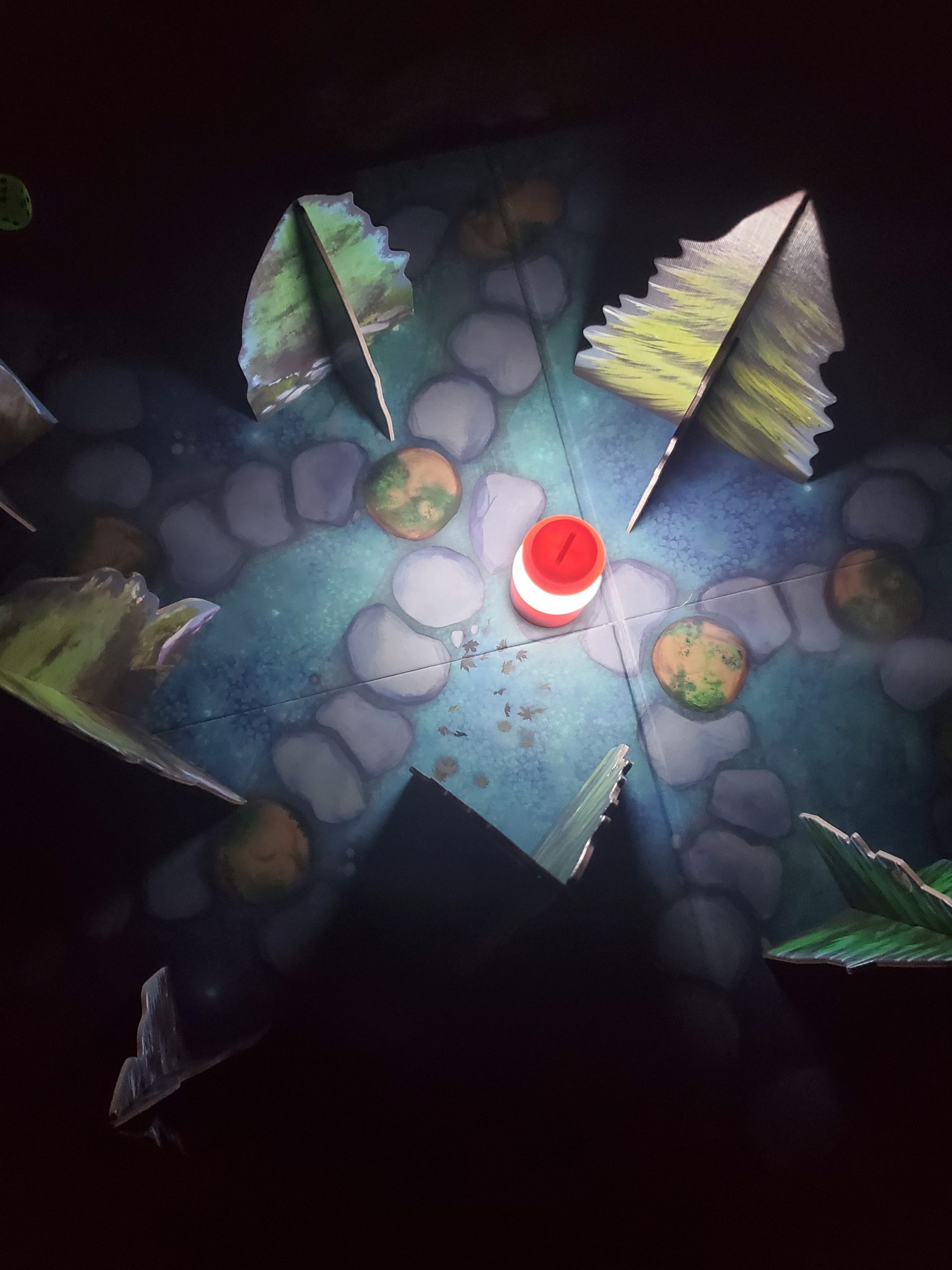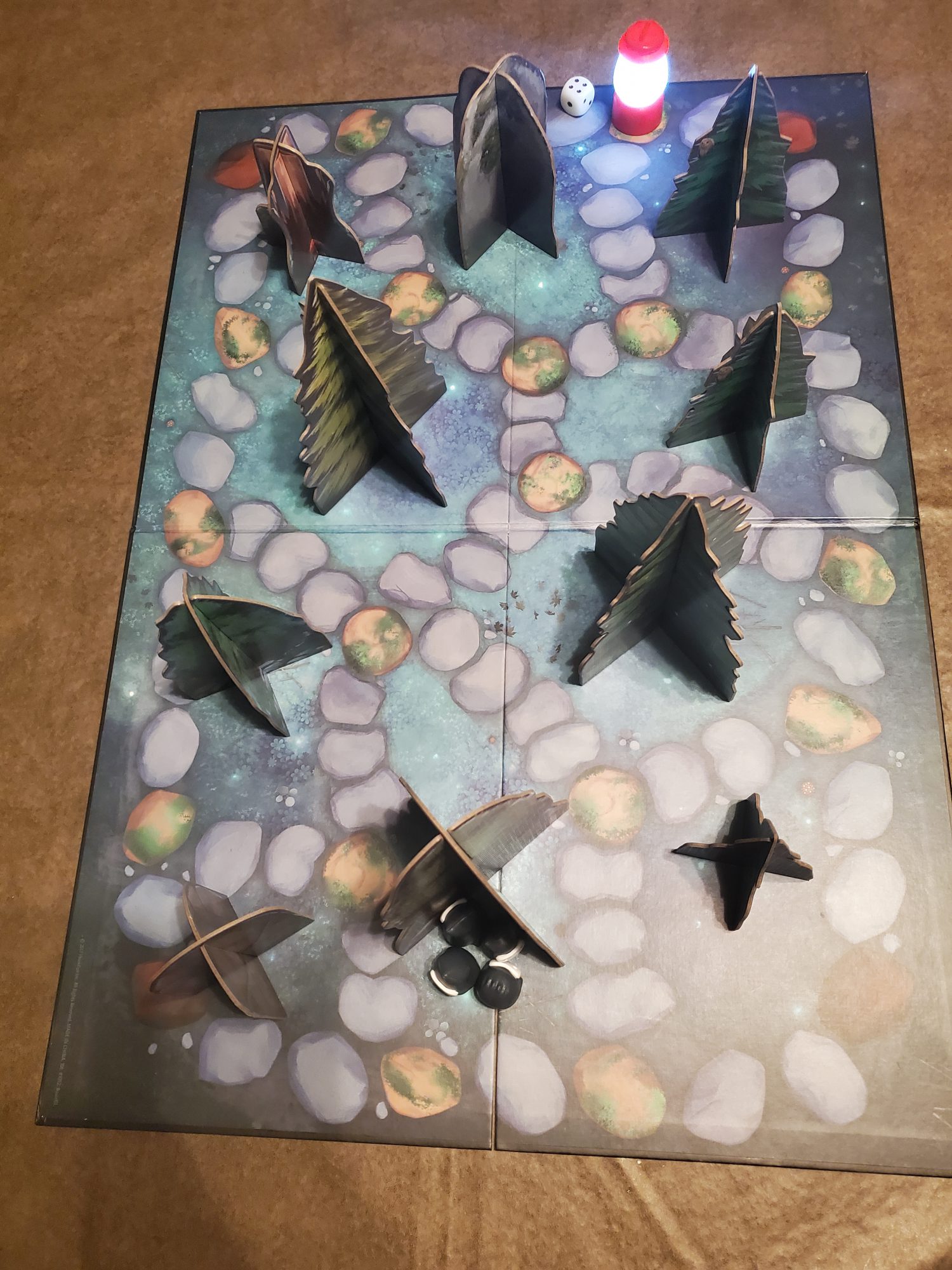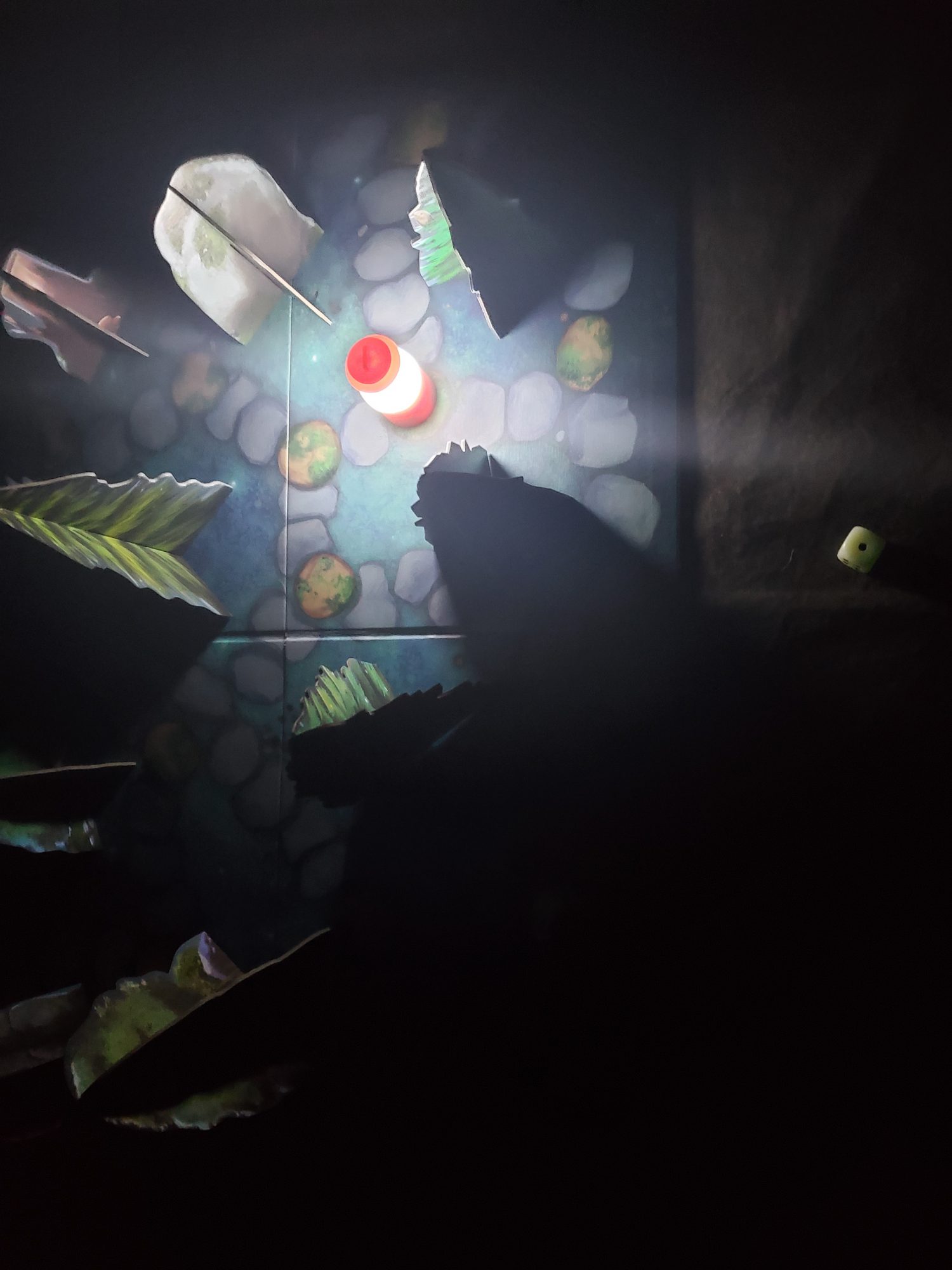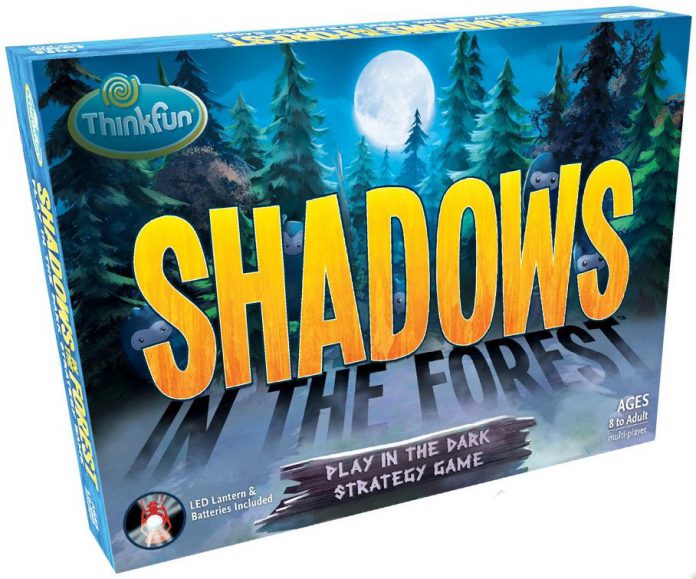Playing tabletop games in the dark is usually pretty difficult. It’s one of the sacrifices we make for the joy of analog gaming. However, thanks to the inclusion of a tiny little lantern, Shadows in the Dark uses light as a gameplay mechanism and component. It doesn’t just enable play, it is the play.
KittySue
Certainly if you had no other choice, you could make quite a few games work with one tiny light source. Ask anybody who has lost power for several days, or anybody who has been stuck playing games around the campfire because they packed flashlights and lanterns but forgot to bring batteries.
But Shadows in the Forest was made for the dark. So naturally we had to try it.
ThinkFun thought of all kinds of neat stuff for this game. There’s the that tiny LED lantern, the little bandit-masked Shadow Creatures, the glowy d6 that is brighter than most other glow in the dark dice I’ve used. There are nice 3D obstacles for the Shadow Creatures to hide behind, ones that are so thick and substantial that it reminds me of games from the early 80s before plastic bits replaced most of it. The rules are simple and easy to understand. These are all things I adore about this game specifically.

So how do I explain this in a nutshell? It’s like a tiny version of Flashlight Tag. Do people still play Flashlight Tag? Flashlight Tag is Freeze Tag meets Hide and Seek, in the dark, with flashlights. Hopefully people still play Freeze Tag! Gee, this nutshell is overflowing. Maybe I should just post pictures and explain the whole thing.
Shadows in the Forest needs at least two players. It can play up to seven, but at the minimum you need a Hider of Shadow Creatures and a Seeker of Shadow Creatures, otherwise known as the Lantern Carrier. The Hider can pick from 3-6 Shadow Creatures to put on the board. The more Creatures you use, the longer and more difficult the game will be. For this article, we had 3 adult players and 4 Shadow Creatures. The game took about half an hour from set up to repacking the box.
The Lantern Carrier set the lantern by the glow in the dark d6 to charge while we assembled the forest. He left the room while the Hiders had a quick strategy talk, hid the Shadow Creatures, and turned off the lights. We neglected to send the dog to the couch so I tripped on her immediately after turning off the light. Don’t do what I did, folks. Keep your floor clear and your pets away from your feet!
Our Lantern Carrier came in, rolled the die, and the tension began.
The Lantern can only move one way, one rocky-path space at a time until it reaches a
One of the big mossy stones, which mark intersections of paths that cross all over the board. At a mossy stone, the Lanturn Carrier can change directions.
If at any point, the Lantern’s light hits a Shadow Creature, the Shadow Creature is frozen in place and loses its little bandit mask. Only another Shadow Creature can unfreeze a frozen companion, and that can only be done in the dark. If all of the Shadow Creatures manage to get to one dark hiding place together, they win. If the Lantern Carrier manages to freeze every Shadow Creature on the board, the Lantern Carrier wins.

The Shadow Creatures’ movements are not limited by dice or paths; they can go anywhere they want as long as they don’t touch any light on the board. Often the Lantern will keep a Creature from moving at all, lest they touch the light and become frozen.
So the Lantern Carrier plods along by die roll, checking for hidden Shadow Creatures as they move. After they move and check for Creatures, they turn their back and wait for the Shadow Creatures to move and form a quietly whispered plan. Then the Hiders bring the Lantern Carrier back to the board for the next round.
We have played Shadows in the Forest about half a dozen times with 2-4 adults. After about the second game, the Hiders have never lost.
I have not played this game with small children. My now-adult son was 17 when we bought this and he still loves it. However, nobody in our house really enjoys being the Lantern Carrier, which gives weight to my partner’s opinion that the game isn’t balanced really well. We have decided that it may be better balanced for adults if we had to play all six Shadow Creatures and if we made some house rules.
One suggested rule is to allow the Lantern Carrier to take another turn if the Lantern ends movement on a mossy stone. Another possibility would be that Shadow Creatures hiding alone must move if they possibly can. This keeps them from camping out on one end of the board while the Lantern wanders off in the wrong direction for several rounds. Raising the stakes makes the game much more appealing to the Seeker and it definitely would make the Hiders think harder on their turn.
I don’t think these rules are particularly needed for younger players or those who are not experienced strategic planners. We have had fun playing with the rules as published, but all the same, we would probably play it more often if we didn’t have to compete to avoid being the one person who has to play against everyone else in the room.
captainraffi
Off the bat, I’m going to go so far as to say that this isn’t the kind of game I’d pull out with my grown-ups game group. It is as much a toy as it is a game and accordingly is one that doesn’t hold up all that well to a group of adults playing competitively.
For the littles, however, it’s a joy. It is dark, moody, and atmospheric, without being scary. It also encourages a sort of creative freeform play rare in board games.
Under ideal conditions—an absolutely pitch dark room—the shadows cast by the trees are clean and stark. This hides the Shadowlings absolutely, leading to genuine moments of delightful surprise when the lantern moves a few steps and reveals a little figure peeking out by a tree.

As kids get older they’ll understand the relationship between light and shadows more and it builds genuine anticipation. They also get to lightly cut their teeth on strategy. Movement is freeform, but the rules ensure that they’ll have to pay close attention to location and potential location. As a parent it’s fun to watch those little lightbulb moments as they learn to plot a path.
The catch with my kids is that right about the time they hit the age where I could stop hovering over them to ensure they played per the rules is about the time they started reaching for more structured, heavier fare (if Ticket to Ride Junior could be called heavy). Shadows in the Forest still sits on the shelf and gets played from time to time, but it feels a bit like gaming-as-creative-play.
Overall, I think Shadows in the Forest is a great little pickup for families with young gamers. As the nights grow longer and kids are more likely to be awake when it gets dark out, it can be a lot of fun to turn the lights off and explore the shadowy forest.


